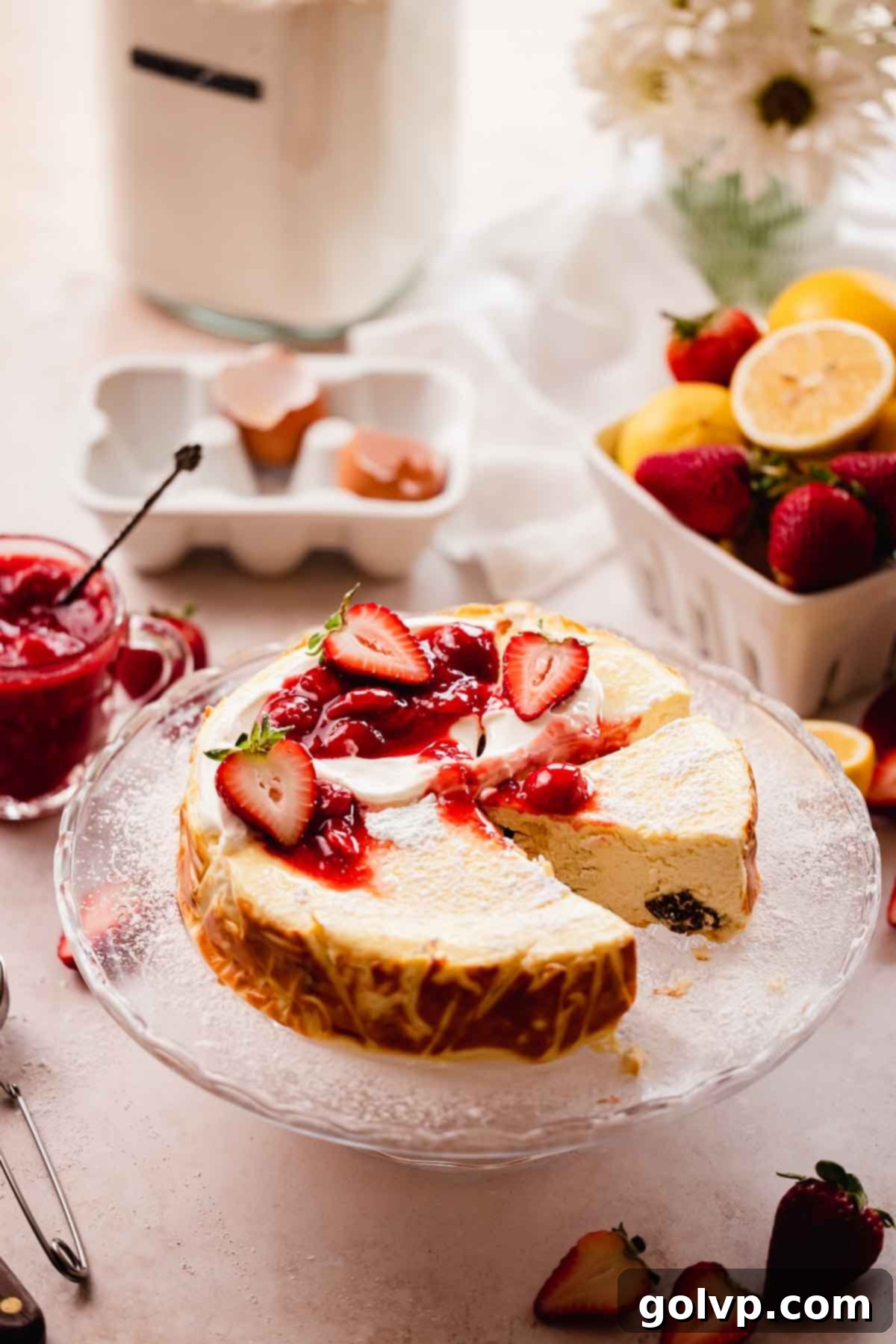Authentic Zapekanka: Easy Ukrainian & Russian Cottage Cheese Cheesecake Recipe
Discover the delightful world of Zapekanka, a traditional Eastern European cottage cheese cheesecake that’s wonderfully creamy, dense, and bursting with zesty flavor. Unlike many Western cheesecakes, this rustic dessert is crustless and naturally high in protein, making it a surprisingly wholesome treat. It’s a beloved staple in Ukrainian and Russian households, a cherished recipe that many, including myself, grew up enjoying. Made with simple, wholesome ingredients like pressed cottage cheese (also known as farmer’s cheese or “tvorog”), vibrant citrus zest, and plump raisins or other dried fruits, it offers a comforting taste of tradition. This nutrient-rich and incredibly delicious cake was a firm favorite in my childhood home, a testament to its timeless appeal.
The beauty of this cottage cheese cheesecake lies in its versatility and nutritional profile. Depending on the type of farmer’s cheese or tvorog you choose, you can easily customize it to be lower in fat and higher in protein. I’ve experimented with various dairy options, and the result is consistently delicious, regardless of your preference. This recipe proves that healthy can indeed be incredibly tasty and satisfying.

🍰 Why you’ll LOVE this recipe
- Effortlessly Easy: Forget complicated water baths or elaborate crusts! This is a rustic, no-fuss cheesecake designed for simplicity. It comes together quickly with minimal effort, making it perfect for busy bakers or those new to cheesecake making. You’ll be amazed at how such a delicious dessert can be so straightforward to prepare.
- Creamy Cottage Cheese Base: The star ingredient here is pressed cottage cheese (farmer’s cheese or “tvorog”). When properly prepared, it creates an incredibly dense, smooth, and creamy texture that distinguishes this cheesecake from its cream cheese counterparts. It’s a unique and satisfying experience for your palate.
- Remarkably High Protein: One of the stand-out features of this traditional Zapekanka is its high protein content. By opting for lower milkfat percentages of cottage cheese, you can create a dessert that is not only delicious but also a great source of protein. I’ve thoroughly tested this recipe with various milkfat levels, and it always delivers a delightful, wholesome treat.
- Authentic Traditional Cheesecake “Zapekanka”: This recipe is a taste of heritage, a popular dish deeply rooted in Eastern European culinary traditions. Growing up, this was a regular dessert, and every bite transports me back to cherished childhood memories. It’s the ultimate comfort food, offering a nostalgic and genuinely authentic experience.
For those seeking other easy and delicious cheesecake ideas, explore these mini lemon cheesecakes. They’re baked in a muffin tin and also don’t require a water bath, offering a bite-sized alternative to this delightful Zapekanka.
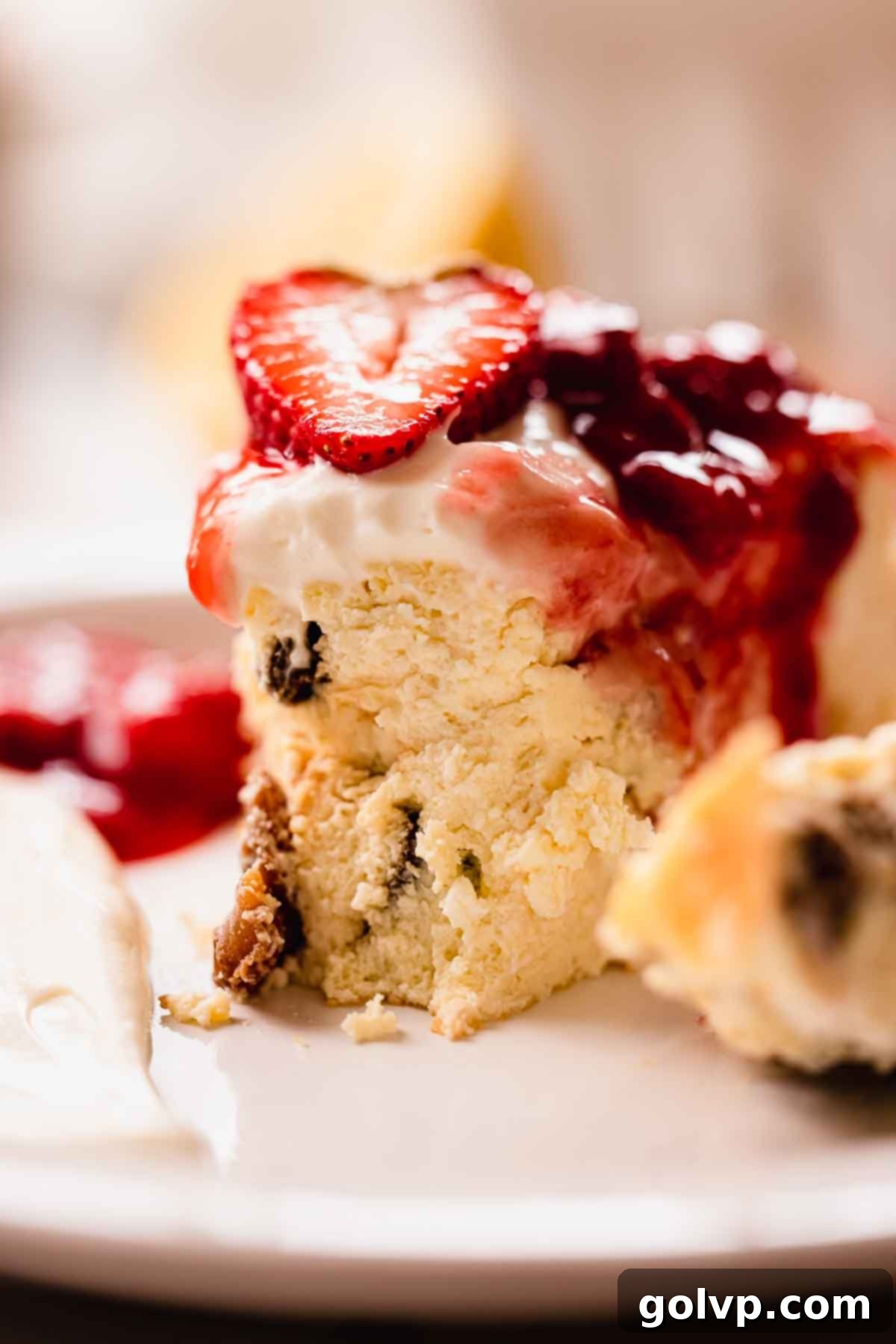
📝 Key Ingredients for Your Perfect Zapekanka
Read through for all the tips you will need for success!
Full steps and ingredients in recipe card below.

Cottage cheese/farmers cheese/tvorog: This is the foundation of our Zapekanka, and the type of cheese is crucial. This recipe specifically calls for firm, or pressed, cottage cheese. Standard cottage cheese, with its loose curds swimming in a yogurt-like sauce, will unfortunately not work due to its high moisture content. You’ll typically find the right kind labeled as “farmer’s cheese” or “tvorog” in larger grocery stores or, more reliably, at your local European deli. This cheese comes in various milkfat (mf) percentages, which will influence the final texture and richness of your cheesecake.
- For a decadent, rich texture closer to a traditional Western cheesecake, opt for a 10-13% mf cheese. This yields a denser, more luxurious result.
- If you prefer a lighter, creamier, and higher-protein version, choose a cheese with 0.5-5% mf. This still produces an incredibly delicious and satisfying cake with a softer, more delicate crumb.
Using the correct cheese ensures the perfect consistency for your Zapekanka. If you love using pressed cottage cheese, you’ll also want to try these cottage cheese brioche buns (vatrushka), another delightful Eastern European treat.
Sour cream: Full-fat sour cream is highly recommended for achieving that signature rich, tangy flavor and creamy texture that elevates this cheesecake. However, if you’re looking to lighten things up, low-fat sour cream or even Greek yogurt can be successfully substituted, offering a similar creaminess with fewer calories. They integrate beautifully into the batter, ensuring a smooth and cohesive cake.
Raisins (or your preferred dried fruit): While I know raisins can be a divisive ingredient, they are a traditional and utterly delicious addition to this cottage cheese cake! When baked, they become wonderfully plump, juicy, and sweet, providing delightful bursts of flavor and texture that perfectly complement the not-too-sweet cheesecake base. If raisins aren’t to your taste, feel free to substitute them with your favorite chopped dried fruits such as apricots, prunes, dried cherries, or even candied citrus zest. Alternatively, you can omit them entirely for a simpler cake.
Potato starch: Cottage cheese typically contains a good amount of moisture, making a binder essential for ensuring the cheesecake holds its shape beautifully. My grandma, a master baker, always insisted on potato starch, and for good reason! It creates the most delicate, melt-in-your-mouth texture while effectively absorbing any excess moisture. While cornstarch, arrowroot starch, or even cake flour can work as substitutes in a pinch, potato starch consistently yields the best results for that authentic Zapekanka feel.
Citrus zest: In many traditional Eastern European recipes, fresh citrus zest was used to impart bright, fragrant flavors, especially in times when vanilla extract was not readily available. Grated lemon or orange zest adds a wonderfully vibrant aroma and a subtle tang that balances the richness of the cheese. I personally love combining it with vanilla extract for a truly fragrant and nuanced cheesecake that honors both tradition and modern preferences.
Vanilla extract: Living in the West, vanilla extract is my go-to, as vanilla sugar or vanillin (often used traditionally in Eastern Europe) can be harder to find. Rest assured, vanilla extract works perfectly to add a warm, comforting depth of flavor to the Zapekanka. Use what is most accessible to you to achieve that lovely aromatic profile.
👩🍳 How to Make This Delicious Cottage Cheese Cake (Zapekanka)
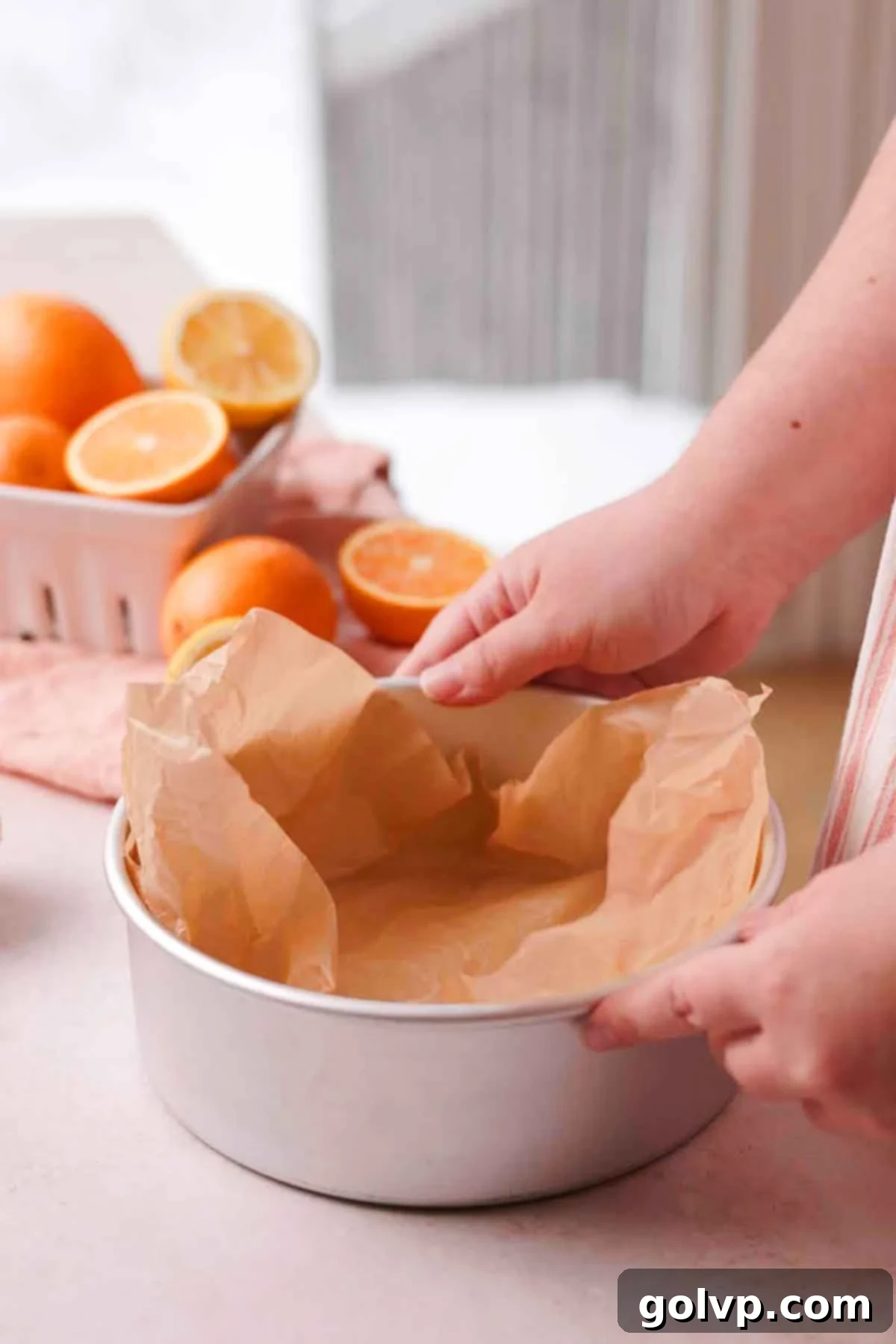
Step 1: Prepare your pan and preheat oven. Begin by preheating your oven to 390°F (200°C). For easy removal, line an 8-inch round baking pan with parchment paper. If you’re using a springform pan, a light greasing of butter on the sides and bottom will suffice to prevent sticking.
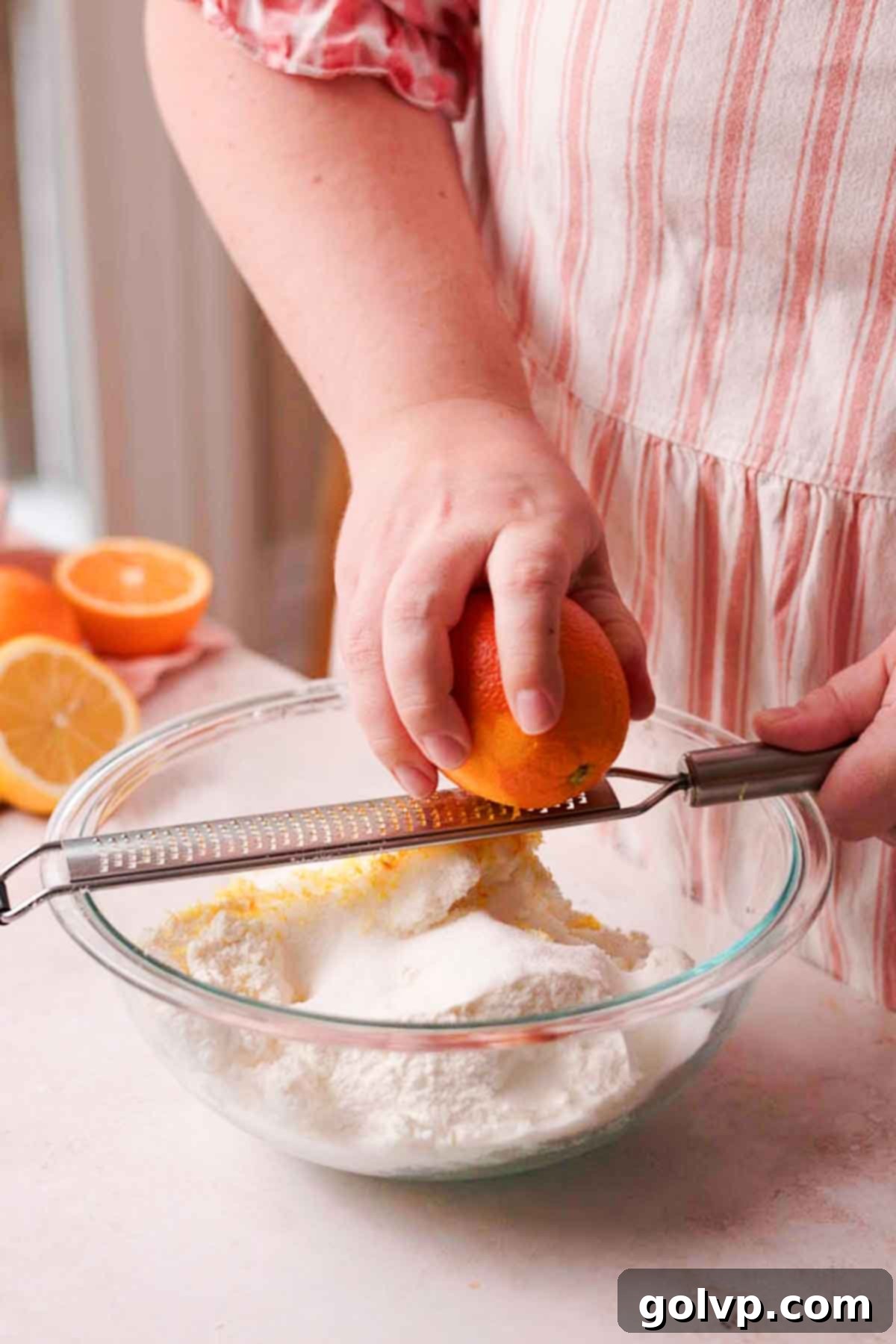
Step 2: Combine dry ingredients with cheese. In a large mixing bowl or the bowl of a stand mixer, combine the pressed cottage cheese, salt, and granulated sugar. Add the freshly grated citrus zest (I love a mix of lemon and orange for a bright flavor). Mix these ingredients with an electric mixer until they are well combined and as creamy as possible, usually about 1 minute. This step helps break down any larger curds in the cheese, ensuring a smoother cheesecake texture.
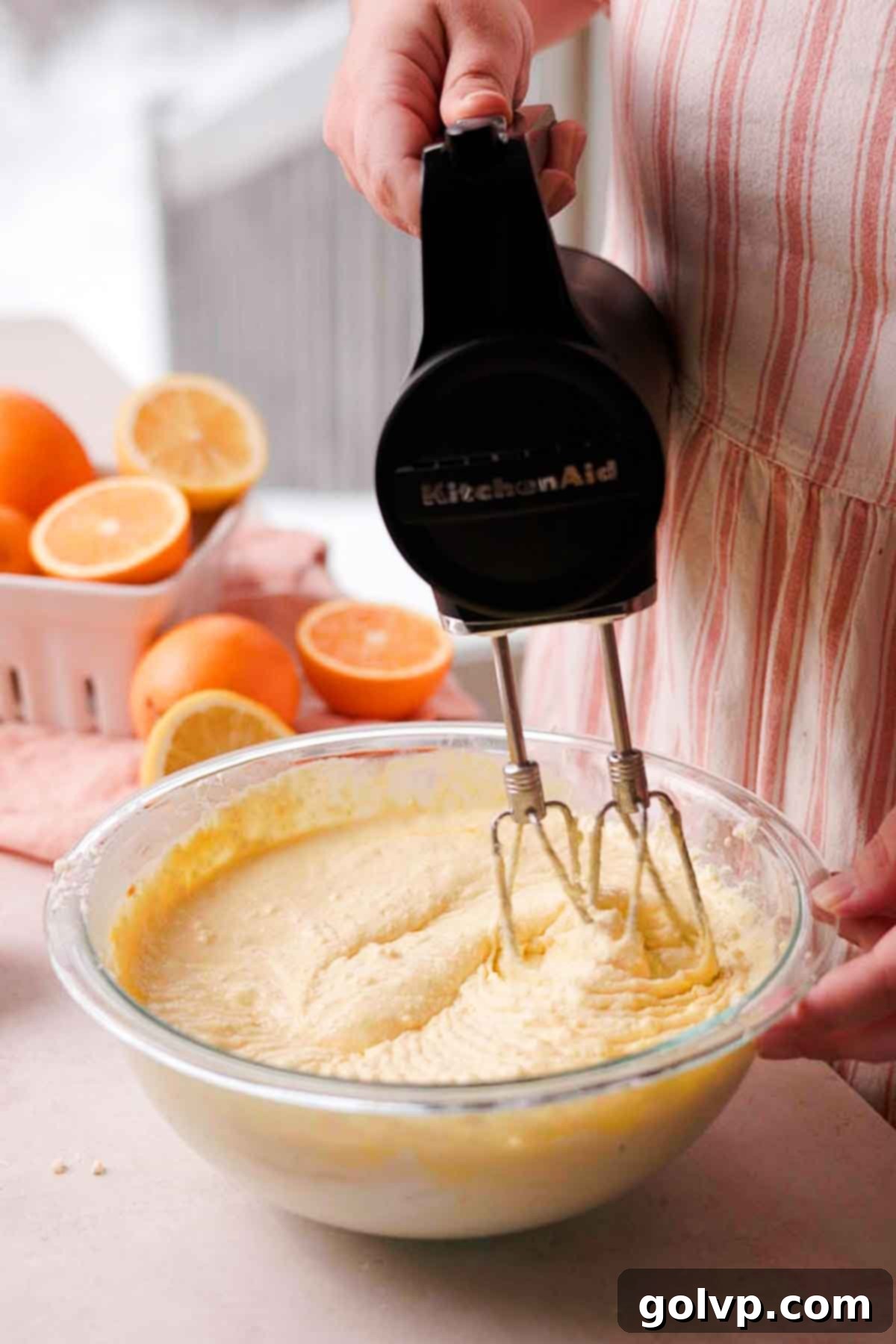
Step 3: Incorporate wet and binding ingredients. Add the eggs to the mixture two at a time, mixing just enough after each addition to fully incorporate them. Remember to scrape down the sides of the bowl to ensure everything is evenly mixed. Next, add the sour cream and vanilla extract, mixing until smooth. Finally, sprinkle the potato starch over the batter and mix thoroughly until no lumps remain. At this stage, gently fold in the optional raisins or other chopped dried fruits if you’re using them.
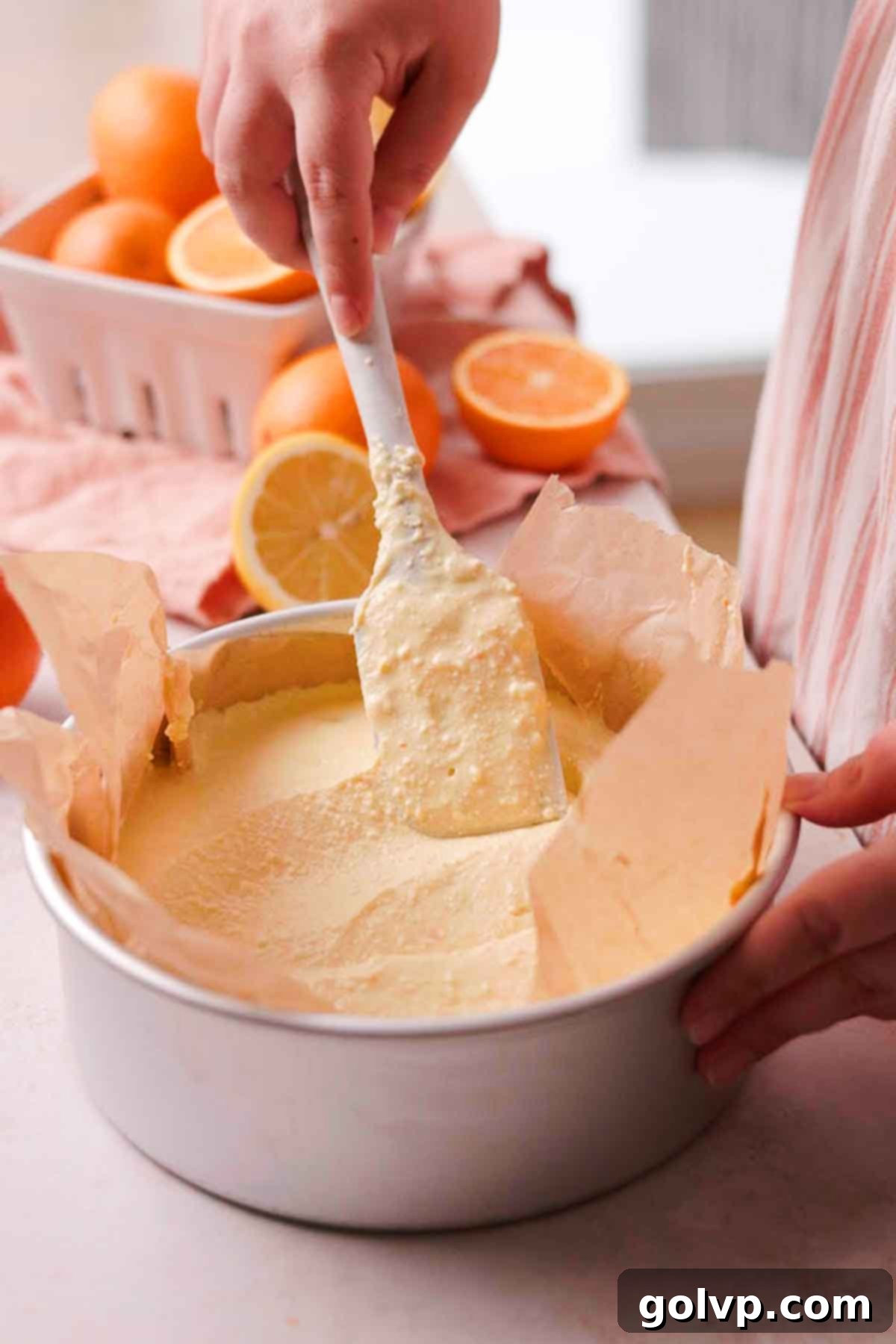
Step 4: Bake until set. Carefully transfer the prepared cheesecake batter into your lined or greased pan and smooth the top with a spatula. Bake for approximately 35-37 minutes, or until the top is completely set and the edges are beautifully golden brown. The center might still have a slight jiggle, which is perfectly normal, and some minor cracking on top is fine – it’s a rustic cheesecake after all!
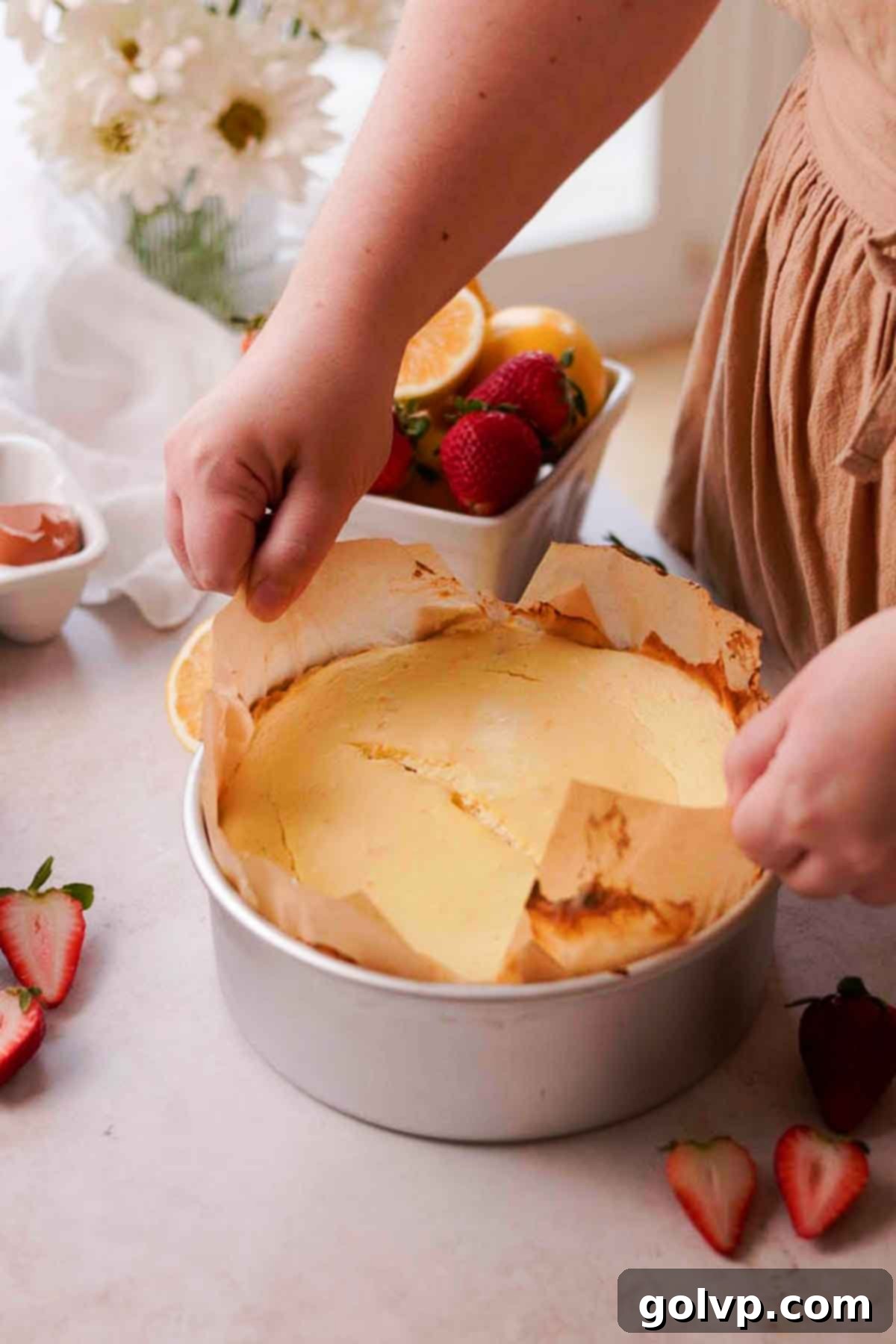
Step 5: Cool and chill. Once baked, remove the cheesecake from the oven and allow it to cool completely to room temperature. This is a crucial step for achieving the perfect dense texture. After cooling, transfer the cake to the refrigerator and chill for at least 2 hours. For the absolute best flavor and firmest texture, I highly recommend chilling it overnight – the wait is truly worth it!

Step 6: Serve and enjoy! Just before serving, dust your Zapekanka with a sprinkle of powdered sugar. Traditionally, this delightful cheesecake is served with a generous dollop of sour cream, a spoonful of berry preserves or jam, and fresh berries. These accompaniments add a wonderful contrast of tang and sweetness. It’s also incredibly delicious served with homemade lemon curd, raspberry curd, or even strawberry curd for an extra layer of gourmet flavor.
✔️ Expert Zapekanka Tips for Success
- Always use pressed cottage cheese, farmer’s cheese, or “tvorog”: This is the single most important tip! Regular, wet cottage cheese will result in a soggy, unset cake. Ensure your cheese is firm and dry, resembling a dense ricotta. If you can only find regular ricotta, press it first by draining it in a cheesecloth for at least an hour to remove excess liquid.
- Mix the cottage cheese and sugar thoroughly with an electric mixer: Don’t underestimate this step! Blending these ingredients well helps to break up any lingering curds in the cheese, creating a much smoother, creamier, and more homogenous cheesecake batter. This is key for achieving that desirable delicate texture.
- Don’t skip the citrus zest (unless you genuinely dislike citrus): The citrus zest, whether lemon or orange, is vital for adding a bright, aromatic lift to the cheesecake. It provides a fragrant counterpoint to the richness of the cheese without being overpowering, giving the Zapekanka its signature fresh flavor.
- Prioritize chilling before serving: Patience is a virtue when it comes to Zapekanka! Allowing the cheesecake to chill for at least 2 hours, or ideally overnight, in the refrigerator is crucial. This cooling period helps the cake to firm up completely, enhances its dense texture, and allows all the wonderful flavors to meld and deepen, making it even more delicious.
- Avoid overmixing the batter once eggs are added: Once you add the eggs, mix only until they are just incorporated. Overmixing can introduce too much air into the batter, potentially leading to a less dense texture or a cracked surface.
- Customize with your favorite additions: While raisins are traditional, feel free to experiment with other dried fruits like chopped apricots, prunes, or cranberries. You can also add a pinch of cinnamon or a touch of almond extract for a different flavor profile.
🥄 Make Ahead and Storage for Zapekanka
This Ukrainian cottage cheese cheesecake is an absolute dream for meal prep and make-ahead baking! In fact, it’s one of those rare desserts that tastes even better the day after it’s made, as the flavors have more time to fully develop and the texture becomes perfectly rich and dense after chilling in the fridge. While my siblings and I, as hungry kids, could never resist eating it warm straight from the oven, if you can exercise a little patience, I highly recommend waiting for that overnight chill for the optimal experience!
To store your Zapekanka, simply place it in an airtight container and keep it in the refrigerator for up to 4 days. It maintains its freshness and deliciousness beautifully. For longer storage, this recipe freezes exceptionally well. I recommend cutting the cheesecake into individual slices before freezing. Place them in an airtight container or a freezer-safe bag, and they will keep perfectly for up to 2 months. Thaw frozen slices in the refrigerator overnight or at room temperature for a few hours before serving.

❔ What Cottage Cheese Do I Use for Zapekanka (Cottage Cheese Cheesecake)?
Choosing the correct type of cottage cheese is paramount for a successful Zapekanka. You are specifically looking for pressed cottage cheese, which is distinctly different from the regular cottage cheese sold in tubs with liquid whey. Pressed cottage cheese has a much firmer, drier, and creamier consistency, similar to a firm ricotta but with more defined, larger curds. It should be dense and almost spreadable when squeezed, not watery.
You’ll typically find this specific cheese under various names, depending on your grocery store or local European deli. Look for labels such as “farmer’s cheese,” “tvorog,” “Ukrainian style cottage cheese,” “Russian style cottage cheese,” or even “Polish style cottage cheese.” The key is its firm texture, lacking the creamy, yogurt-like sauce of standard cottage cheese, which is too wet for this recipe.
Once you’ve located the right type, you might notice different milkfat (mf) and moisture content percentages on the packaging. These percentages will influence the final texture of your Zapekanka:
- For a rich, dense texture that closely resembles a more traditional cheesecake, opt for a farmer’s cheese with a higher milkfat content, typically 10-13% mf. This will give you a luxurious, full-bodied cake.
- If you prefer a lighter, creamier, softer, and higher-protein version, choose a cheese with a lower milkfat content, around 0.5-5% mf. This yields a delightful cake that is still incredibly flavorful and moist, yet feels lighter.
I’ve extensively tested this recipe with several varieties of pressed cheese to ensure its foolproof nature, regardless of what you can find. My tests included a 0.5% mf cheese (with 76% moisture), a 14% mf cheese (with 78% moisture), and even a mixture of both. All yielded fantastic results, proving the recipe’s adaptability.
Note: Milkfat can often be used interchangeably with butterfat on packaging, so keep an eye out for both terms when selecting your cheese.
Cottage Cheese Varieties I Tested for Zapekanka:
- 14% mf, 78% moisture: This variety produced a rich, incredibly dense cheesecake, most akin to a traditional cheesecake. It was consistently a crowd favorite for its luxurious mouthfeel.
- 0.5% mf, 76% moisture: This resulted in a creamy, moist, yet lighter cake, with less overt richness. It tied for a very close second place in taste tests, praised for its pleasant texture and higher protein.
- Half 14% mf, half 0.5% mf: This combination offered a wonderful balance, delivering a creamy and moist cake that still retained a satisfying richness. This test confirmed that variations in milkfat content between 0.5% and 14% will all work splendidly in this recipe, allowing for personal preference without compromising quality.
By understanding these differences, you can select the perfect cheese to achieve your desired Zapekanka experience!

📖 Recipe FAQs
Pressed cottage cheese, often called farmer’s cheese or tvorog, is a dairy product that has had most of its liquid whey removed, resulting in a much firmer, drier, and more concentrated curd. Unlike regular cottage cheese, which has curds suspended in a creamy liquid, pressed cottage cheese is dense and creamy, almost spreadable. Its texture is more akin to a strained ricotta cheese, but typically with larger, more defined curds. This dryness is crucial for achieving the correct consistency in Zapekanka.
If you’re unable to find farmer’s cheese or tvorog, your best alternative is to use fresh, full-fat ricotta cheese. However, ricotta is typically wetter than pressed farmer’s cheese, so you will need to strain it first. Place the ricotta in a clean kitchen towel or a triple-layered cheesecloth and either hang it over a bowl or place it in a colander with a weight on top for at least 1-2 hours to drain out any excess liquid. The goal is to get it as dry and firm as possible before incorporating it into the recipe.
The primary reason for a wet cheesecake is usually the moisture content of the farmer’s cheese. Not all brands or varieties have the same water content. While I’ve tested this recipe extensively to be as foolproof as possible, if your cake consistently turns out a little too moist or wet, it indicates your specific cheese variety might be exceptionally wet. For your next attempt, try increasing the amount of potato starch by one tablespoon. This extra binder will help absorb more moisture and create a firmer, more set cheesecake. Additionally, ensure you’ve thoroughly mixed the batter to properly activate the starch.
According to generations of family baking wisdom (from my grandma to my mom and now to me!), potato starch is the secret to the softest, most delicately textured cottage cheese cake. We’ve experimented with various other binders like cornstarch, semolina, and even all-purpose flour. While these can work, they often result in a slightly gummier or denser texture that lacks the exquisite, melt-in-your-mouth quality that potato starch consistently provides. It truly makes a noticeable difference in the final product’s elegance and tenderness.
Absolutely! I’ve personally tested this substitution, and it works wonderfully. Using Greek yogurt instead of sour cream is an excellent option if you’re aiming for a more macro-friendly or higher-protein cottage cheese cheesecake. Choose plain, full-fat Greek yogurt for the best creamy texture, but even a lower-fat version will yield delicious results. It contributes a similar tang and moisture to the cake.
While I haven’t specifically tested with artificial sweeteners, it should theoretically work. If you choose to use one, make sure to consult the conversion guidelines on your sweetener’s packaging to use the correct equivalent amount for granulated sugar. I have, however, successfully tested this recipe using natural sweeteners like maple syrup, maple sugar, and honey, and all yielded excellent results with a lovely depth of flavor. You can also easily reduce the total amount of sugar in the recipe if you prefer a less sweet dessert, and it will still be incredibly delicious.
🍰 More Related Recipes You’ll Love
- Cottage Cheese Brioche Buns [Vatrushka]
- Mini Lemon Cheesecakes
- Eggnog cheesecake
- Strawberry Crumble
Did you make this recipe? I would love for you to rate this recipe and hear what you think in the comments below! Share your creation on Instagram and tag @flouringkitchen. Follow me on Pinterestto save and for more recipe ideas.
📖 Recipe
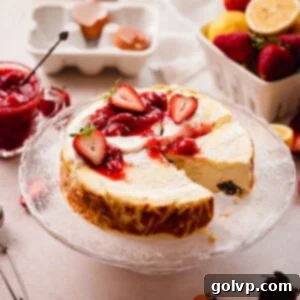
Cottage Cheese Cake (Zapekanka)
MaryEquipment
- electric mixer
Ingredients
- 2 lbs pressed cottage cheese farmer’s cheese or tvorog (see notes for details on types)
- ½ cup granulated sugar
- ¼ teaspoon sea salt
- 1 tablespoon citrus zest grated (from half a lemon and half an orange for a balanced flavor)
- 4 large eggs
- ½ cup sour cream or Greek yogurt (full-fat recommended for richness)
- 1 tablespoon vanilla paste or extract, for aromatic depth
- 2 tablespoons potato starch (essential for texture, see tips)
- ½ cup raisins candied citrus peel, or other chopped dried fruit (optional, for traditional flavor)
To serve
- 1 tablespoon powdered sugar (for dusting)
- ½ cup sour cream or Greek yogurt
- ½ cup fruit preserves or jam, for a classic topping
Instructions
- Preheat your oven to 390°F (200°C). Line an 8-inch baking pan with parchment paper for effortless removal. If using a springform pan, simply grease the sides and bottom lightly with butter.
- In a large bowl or stand mixer, combine the pressed cottage cheese, salt, sugar, and grated citrus zest. Mix with an electric mixer for about 1 minute, until the mixture is well combined and as creamy as possible, helping to break down curds for a smooth cheesecake.2 lbs pressed cottage cheese, ½ cup granulated sugar, ¼ teaspoon sea salt, 1 tablespoon citrus zest
- Add the eggs two at a time, mixing just enough after each addition to incorporate. Scrape down the bowl thoroughly to ensure even mixing of all ingredients.4 large eggs
- Stir in the sour cream and vanilla extract. Finally, sprinkle the potato starch over the batter and mix well until it is fully combined and smooth.2 tablespoons potato starch, ½ cup sour cream, 1 tablespoon vanilla paste
- Gently fold in the raisins (if using), or any other preferred chopped candied citrus or dried fruit, ensuring they are evenly distributed throughout the batter.½ cup raisins
- Transfer the batter into the prepared pan and smooth the top with a spatula. Bake for 35-37 minutes, or until the top is fully set and the edges are lightly golden brown. A slight crack on top is completely normal for this rustic style cheesecake.
- Allow the cheesecake to cool completely to room temperature. Then, refrigerate it for a minimum of 2 hours to ensure it chills thoroughly. For the absolute best dense texture and flavor, I highly recommend chilling it overnight.
Video
Notes
- Cheese type is key: Always use pressed cottage cheese, farmer’s cheese, or “tvorog” (also known as Ukrainian, Russian, or even baker’s cheese). If pressed ricotta is your only option, make sure to drain it thoroughly beforehand.
- Achieve creaminess: Mix the cottage cheese and sugar very well with an electric mixer. This breaks up the curds and ensures a smoother, less chunky cheesecake.
- Flavor enhancer: Don’t skip the citrus zest! Unless you truly dislike citrus, it imparts a beautiful, fragrant flavor that brightens the cake without being overwhelmingly lemony or orangey.
- The importance of chilling: For the best results – a firm texture and enhanced flavor – allow the cheesecake to chill completely in the refrigerator for at least 2 hours, or ideally overnight, before serving.
